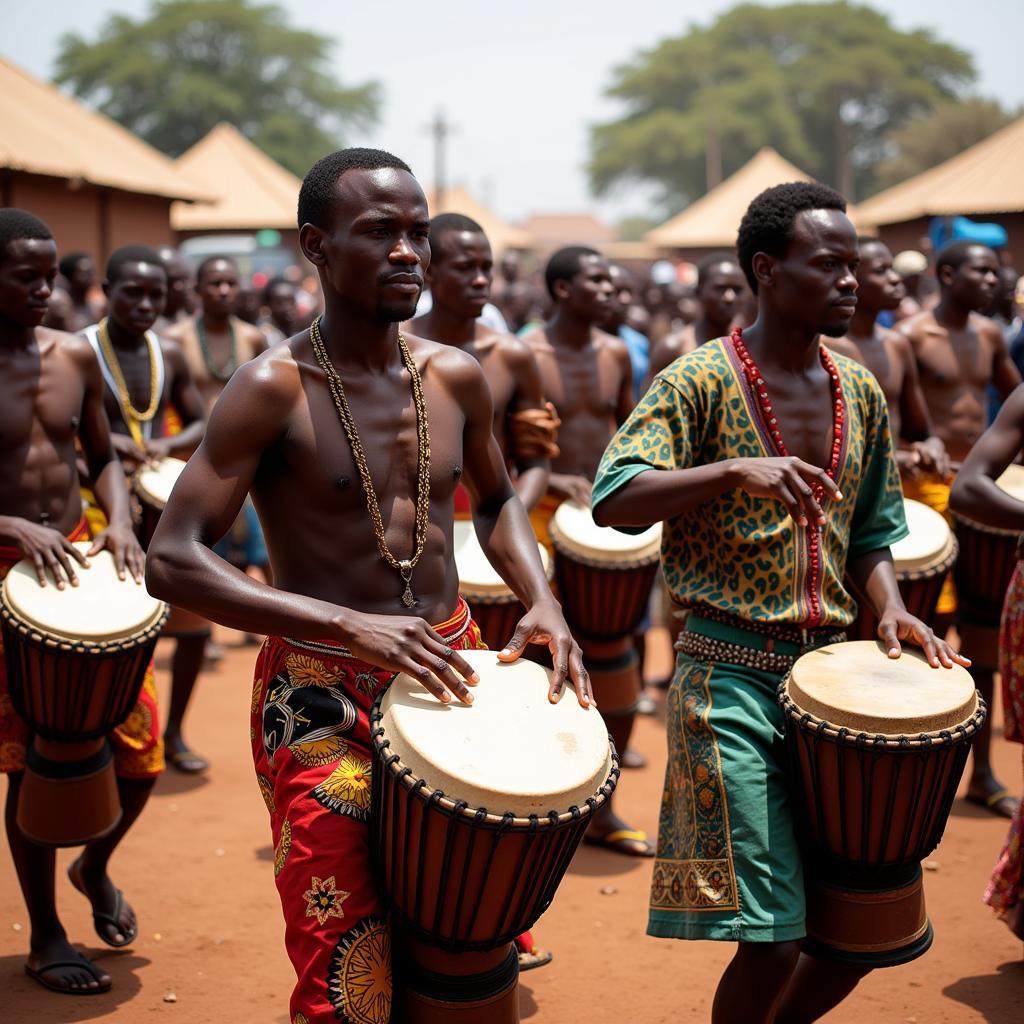1960s African American Men Hairstyles: A Cultural Revolution
The 1960s marked a pivotal moment in African American history, and 1960s African American Men Hairstyles played a significant role in expressing this cultural shift. More than just fashion statements, these hairstyles became symbols of identity, pride, and resistance against societal norms. From the sharp lines of the conk to the natural embrace of the Afro, hair became a powerful language, reflecting the changing social and political landscape.
The early 1960s saw the continuation of more established styles, with the conk, popularized in the decades prior, still holding sway. This meticulously groomed hairstyle, achieved through chemical straightening, represented a desire for assimilation into mainstream white culture. However, as the Civil Rights Movement gained momentum, a shift began to occur. Men started to move away from styles perceived as conforming to white standards and began embracing their natural hair texture.
The Rise of the Afro: A Symbol of Black Pride
The mid-to-late 1960s witnessed the rise of the Afro, a hairstyle that would become synonymous with Black Power and self-acceptance. This natural, voluminous style symbolized a rejection of Eurocentric beauty standards and an embrace of African heritage. Figures like Stokely Carmichael and Huey Newton, prominent leaders of the Black Power movement, further solidified the Afro’s status as a symbol of resistance and Black pride. No longer was straightening one’s hair seen as necessary; instead, natural hair became a source of power and beauty.
The Afro wasn’t merely a hairstyle; it was a statement. It declared, “This is who I am, and I am proud.” This sentiment resonated deeply within the African American community and inspired a new generation to embrace their natural beauty. The Afro’s popularity helped to pave the way for greater acceptance of natural hair in mainstream culture and continues to influence hairstyles today.
Beyond the Afro: Exploring Other 1960s Styles
While the Afro dominated the latter half of the decade, other hairstyles for African American men in the 1960s coexisted. The “process,” a chemically straightened hairstyle, remained popular among some, although its significance began to shift. Rather than solely representing assimilation, it became more of a personal choice, reflecting individual preferences.
Shorter, more tapered natural hairstyles also gained traction, offering a less voluminous alternative to the Afro while still embracing natural texture. These styles offered versatility and ease of maintenance, appealing to men seeking a more understated yet still culturally relevant look. These varied styles reflect the diversity within the African American community and the evolving understanding of beauty and self-expression.
What Were Popular 1960s African American Hairstyles?
The most prominent 1960s African American hairstyles included the iconic Afro, representing Black pride and the natural hair movement. The conk, although declining in popularity, remained present, while the “process” and shorter, tapered natural styles offered further options. Each style carried its own cultural significance, reflecting the complex social and political climate of the time. You can also learn more about African American finger wave hairstyles.
This period of transformation also impacted the 1970s African American civil rights movement and African American culture in the 1970s. Though the Afro’s popularity might have peaked in the 60s, it continued to be a powerful statement in the next decade.
Furthermore, the boldness and experimentation with hairstyles started in the 60s continued to grow. It led to new styling techniques and products aimed specifically at the natural hair community. This laid the foundation for the more diversified hairstyles and African American feathered bob hairstyles we see today.
In conclusion, 1960s African American men hairstyles were more than just fashion; they were a reflection of a cultural revolution. The shift towards natural hair, particularly the Afro, signified a powerful embrace of Black identity and a rejection of societal pressures. These hairstyles became a language of resistance, pride, and self-love, forever shaping the landscape of Black hair and its cultural significance.
FAQ
- What does the Afro symbolize? The Afro symbolized Black pride, self-acceptance, and a rejection of Eurocentric beauty standards.
- What other hairstyles were popular among African American men in the 1960s besides the Afro? Other styles included the conk, the “process,” and shorter, tapered natural haircuts.
- Why was hair so important during the Civil Rights Movement? Hair became a powerful form of self-expression and a symbol of resistance against societal oppression.
- How did 1960s hairstyles influence later decades? They paved the way for greater acceptance and celebration of natural hair in mainstream culture.
- Where can I find more information about African American hairstyles? You can explore online resources and historical archives for further research.
- Are there any funny sayings related to African American hair color? Check out this resource on African American hair color funny saying for some lighthearted humor.
- How did these hairstyles reflect the changing times? They mirrored the growing sense of Black consciousness and the fight for equality and civil rights.
Need assistance? Contact us 24/7: Phone: +255768904061, Email: kaka.mag@gmail.com, or visit us at Mbarali DC Mawindi, Kangaga, Tanzania.


